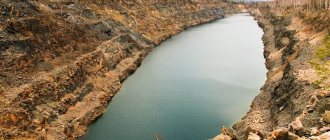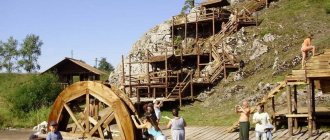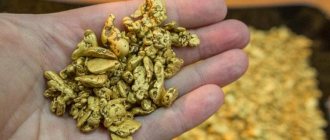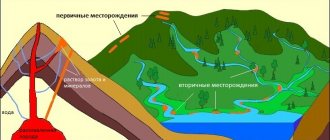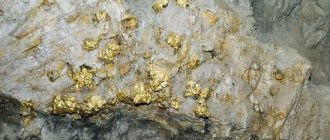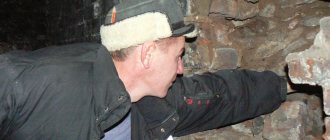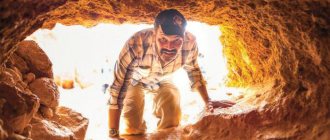The European part of Russia is not so rich in gold deposits in comparison with the Trans-Ural territories. However, for example, in the north of Karelia, the Severonickel enterprise, in addition to nickel, also produces a small amount of ore and precious metal concentrate. There are also small placers. Gold mining in the Leningrad region has been recognized as unprofitable, but this does not stop private miners who independently wash aurum in the rivers and streams of the region. Where and how to look for precious grains of yellow metal. And is it realistic to mine gold in the northwest of the country?
General characteristics of the region
The entire territory of the region is located on the East European (Russian) Plain. The highest point does not even reach three hundred meters above sea level. It is the flat nature of the relief that explains the fact that ore minerals in the Leningrad region are practically absent. But there are non-metallic ones, most of which are actively used in construction. On the territory of the region there is an extensive and developed river network, there are almost two thousand lakes, including the largest in Europe - Ladoga.
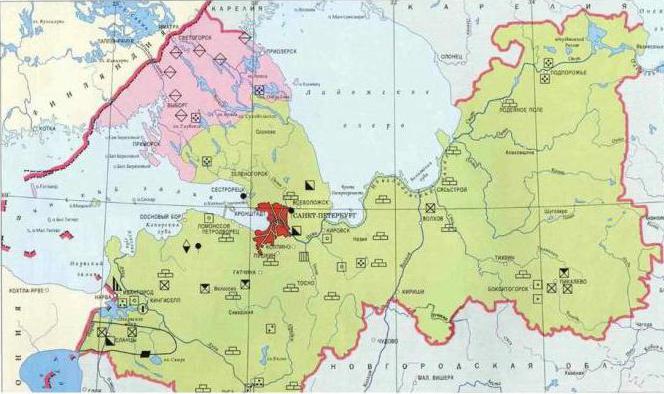
The region is located in the taiga zone, therefore it is rich in forests (coniferous in the north and mixed in the south), which occupy more than half of the region's territory. A significant part of the area is swampy. But this did not prevent the almost complete exploration of the area for the presence of mineral resources. A map of mineral resources of the Leningrad region is shown below.
home
Only in two districts of the Vologda region 44 tons of gold can be mined.
Almost all Vologda media reported funny information: one Vologda resident, working at his dacha in the Ust-Kubinsky region, found minerals similar to diamonds, as well as an oily liquid resembling oil coming out of the ground. However, specialists from the Department of Natural Resources who arrived at the scene disappointed the amateur geologist: the “diamonds” turned out to be limestone with calcite, and the “oil” had nothing in common with the real thing... One could laugh at this story and forget it, if not for one circumstance - There really are numerous treasures under our feet that we are often unaware of. We don't suspect it yet.
But in the future...
Just a few decades ago, it was believed that the main natural resources of the Vologda region were located not above, but underground - forests occupy three-quarters of the region’s territory. But then it turned out that the underground storerooms were by no means empty. In Vytegorsky, Vologda, Ust-Kubinsky, Chagodoshchensky, Ustyuzhensky and many other areas, deposits of sand, gravel, various clays, fluxing limestones were found... Directly near Vologda and in the west of the region there are huge reserves of peat. More than 2,000 peatlands of more than one hectare each have already been explored, containing an estimated 6 billion tons of valuable raw materials! And the region is provided with its own reserves of fluxing limestones, coupled with dolomites used in metallurgy, for more than 100 years.
But it just so happens that deposits of sand, gravel and peat do not impress the average person. Give him coal, oil, gold and diamonds! We have a problem with the first one. The Vologda region really doesn’t have its own coal and, apparently, never will. But everything else is there. You just need to find it.
The Vytegorsky, Ustyuzhensky and, possibly, Veliky Ustyugsky districts are considered the most promising for the extraction of placer gold. Research has shown that in some places each cubic meter of soil contains up to 30 milligrams of the precious metal. It seems like a little, but in only two western regions of the Vologda region, according to forecasts, 44 tons of gold can be mined!
Our search for diamonds began in the early 90s. The Ilesk site on the border of the Vologda and Arkhangelsk regions is considered the most promising. As a result of drilling geological exploration wells, as stated in official reports, it was possible to identify “13 priority anomalies, the connection of which with kimberlite explosion pipes is very likely.” Translated into normal language, this means that although the diamonds themselves have not yet been found, signs of their nearby occurrence are already evident.
A separate conversation about “black gold”. Oil was searched for in the Vologda region in two stages. First in the 70s, then in the 90s. The most large-scale work was carried out in the Vologda region near Fedotov. Several wells were drilled there, the deepest of which reached 2600 meters. Now the main search has moved to the Gryazovets district. Moreover, Yaroslavl search engines have already discovered oil near neighboring Danilov.
For now, we are still talking about the “prospects of the territories.” But no one doubts that there is oil in our depths. Moreover, if a couple of years ago the total reserves of “black gold” in the Vologda region were estimated at 530 million tons, now this figure has grown to 630 million! If all our oil were extracted and sold on Western markets, at the current exchange rate the region would receive about 100 billion dollars! Or 75 thousand “greens” per inhabitant, including old people and babies!
Alas, we are still far from achieving the prosperity of the United Arab Emirates. Oil exploration and production are very expensive activities! And most importantly, this oil still needs to be found. It seems to be here, under your feet, but try to get into the underground reservoir...
However, oil is oil, but in our depths there is a much more valuable treasure - drinking water. Clean, tasty, real. We may not yet feel this wealth, but our descendants will certainly appreciate all the benefits of such reserves. To date, 32 large underground “reservoirs” with operational reserves of 125 thousand cubic meters of life-giving moisture per day have already been explored in the Vologda region! But we also have mineral waters and special “technical” anti-ice brines, which are used to water roads in winter. So the region looks to its “fossil” future with optimism. And in a couple of years, information about Ust-Cuban oil and diamonds may well turn out to be real...
Availability of minerals
Of the twenty-six types of minerals identified in the region, only six are classified as ore minerals. At the same time, more than five hundred deposits have been explored, but less than twenty percent are exploited. The mineral resources of the Leningrad region are associated with tectonics - the territory is located at the junction of tectonic structures. Therefore, the northern parts are rich in deposits of solid building materials - granite, stone, gravel, sand. Thick layers of sedimentary rocks in the southern part contain phosphorites and oil shale, bauxite, limestone and dolomite. Deposits of peat, sand, and clay are distributed almost evenly throughout the region. The waters of the Gulf of Finland contain small deposits of iron-manganese ores. In addition, there are several radon springs and mineral thermal waters in the region.
What mineral resources are there in the Leningrad region
Sand and gravel rocks are massively mined in the region. It was in such conditions that the Finns found gold placers. The mass fraction of metal here is quite low. When developing deposits of construction sand, they try to find out the level of profitability of the accompanying gold mining.
Geological surveys and massive soil sampling in the area of the Shokshi and Oyat rivers showed the presence of kimberlite pipes, which indicates the deep occurrence of diamonds. True, the breed is quite small and is not suitable as precious stones for jewelry.
The presence of hydrocarbons indicates the presence of oil reservoirs. The main problem remains the cost of producing a barrel.
The main natural resources that are massively mined in the region include clay, sand, limestone, shale, phosphorites, and bauxite. The rock is mined primarily using the mining method. More than 2,000 peat bogs provide continuous peat extraction.
Fully developed minerals
According to the degree of development of deposits, several groups should be distinguished that make up the mineral resources of the Leningrad region. The list should start with fully developed minerals, which include shale, phosphates and bauxite.
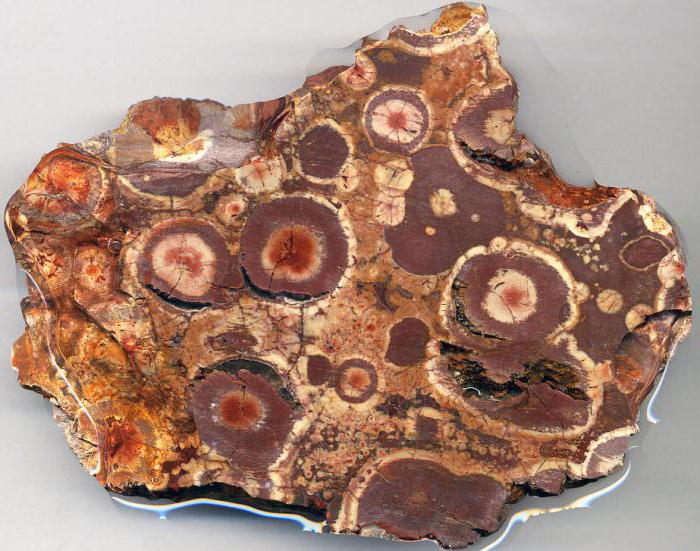
Bauxite plays the largest role in industrial use. The occurrence of ores near Boksitogorsk is shallow, so mining is carried out mainly by open-pit mining. The extraction of shale near the city of the same name takes place using the mine method, because the depth of its occurrence reaches three hundred meters. Phosphorite raw materials are mined near Kingisepp.
Partial development
Partially developed minerals are various types of building materials. The mineral resources of the Leningrad region are rich in granite, limestone, construction and molding sand, brick and refractory clay. Granite is mined in the northern part of the Karelian Isthmus by open-pit mining.
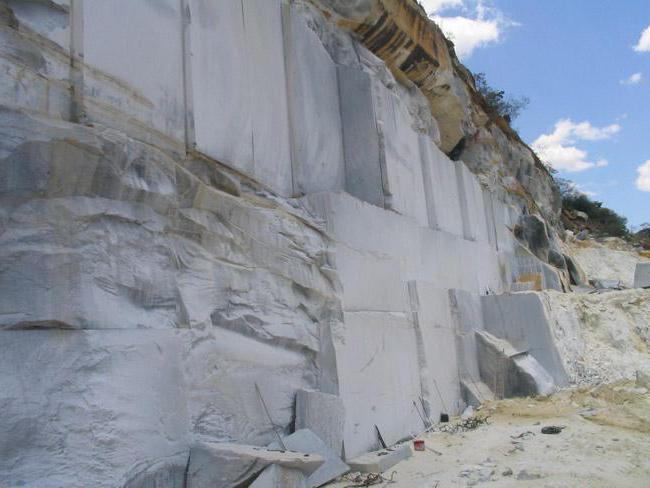
The richest limestone deposits are located in the eastern part of the region. The main sources of mineral water are carbonic (directly in St. Petersburg), sulfuric (near Sablino) and sodium chloride (near Sestroretsk). A large number of swamps served as the basis for the presence of peat deposits on an industrial scale. Its applications - the fuel industry and agriculture - have recently switched to other materials. Therefore, peat reserves, located everywhere, but mainly in the south and east, are practically not developed.
Were there gold mines in Karelia?
Recently, the series “Ashes” was shown on Russian television, in which famous actors E. Mironov and V. Mashkov starred. The action of one of the episodes takes place near Sortavala, where gold mines in Karelia became the object of robbery. This turn of events came as a complete surprise to the viewer, and even a subject of ridicule, especially for local residents. But are the creators of the series so far from the truth?
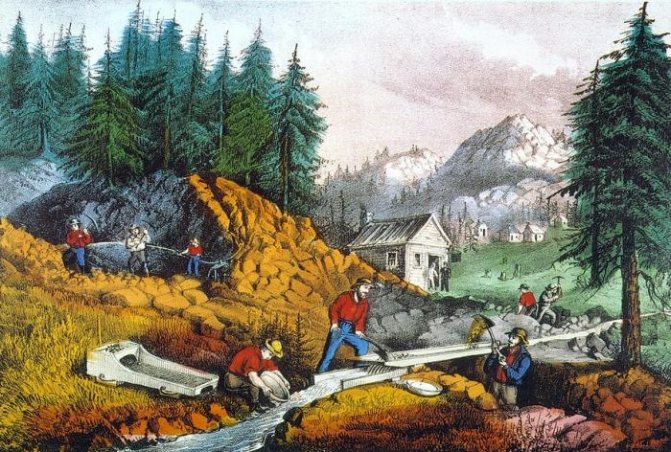
Brief history of gold mining in Russia
As you know, Kievan and Muscovite Rus' did not have their own gold reserves, and the map of gold mines was a continuous blank spot. All jewelry was then made from gold and precious stones, brought into the country mainly from Byzantium. Therefore, the main currency of that time was most often sable skins. And yet, the rulers of that time did everything possible to discover their own deposits of the precious metal. The Russian Tsar Ivan III specially ordered specialists in the mining sector from Italy, and under his grandson Ivan the Terrible, Siberia was conquered, including in order to find gold there. Although they began to mine it much later - under Peter I. For this purpose, the Ministry of Mining Affairs was specially created, consisting mainly of German specialists, who developed the gold mines of Russia. Since then, the map of gold-bearing areas has been constantly updated with new objects.
And although it is generally accepted that gold mining on an industrial scale began in the Urals in the middle of the 18th century, gold mining began in Karelia a little earlier.
Karelian gold
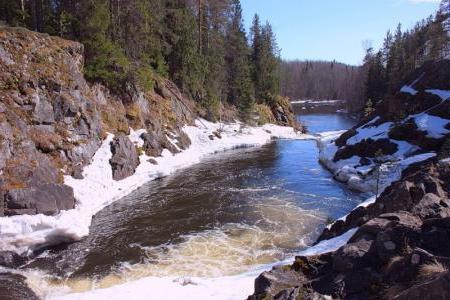
In this beautiful but harsh region there is a very picturesque Vygozero, into which more than twenty rivers flow, and only one flows out - Nizhny Vyg. This river, which flows into the White Sea, has many rapids and waterfalls, the most famous of which is Voitsky Padun. It got its name because the water falling along three branches from a four-meter height made a loud roar and howl.
Upstream (or, as they say, above the waterfall) in the 16th century, the small village of Nadvoitsy appeared here, whose population in 1647 numbered only 26 households (100-150 people). The village belonged to the Solovetsky Monastery. Since it was very difficult to feed oneself by farming in those parts, local peasants dug copper ore and donated it to the monastery, from which small icons and crosses were cast.
In 1737, local resident Taras Antonov found a copper vein, which made it possible to begin development on an industrial scale. Copper ingots were smelted from local ore in Petrozavodsk, which were then sent to St. Petersburg for the production of copper coins.
The attention of one of the mining engineers hired by Peter I was attracted by yellow shiny grains in the ore coming from Nadvoitsy. From this moment the gold mines in Karelia begin their history.
Over half a century of work at the Nadvoitsky mines, 74 kilograms of gold and over 100 tons of copper were mined. The mine was subsequently closed due to depletion. Although there are rumors that local residents still make their living by mining gold dust.

Gold mines in Karelia today
Repeated attempts to find gold in these areas were made later. Development was carried out in several places, and in the Pryazhinsky district and on the border of the Kondopoga and Medvezhyegorsky districts they even found gold veins, the reserves of which, according to geologists, do not allow mining to begin on an industrial scale. In order for gold mines in Karelia to start working again, it is necessary that the deposits contain at least five tons of the precious metal.
Gold mining
The region is not rich in the presence of abundant gold deposits, but gold-bearing places are present. This metal is mainly found in deposits of other minerals, both ore and non-ore. But its presence in these sources is rather scarce. Therefore, gold mining in the Leningrad region is considered unprofitable and is not carried out industrially. But it is of interest for amateur artisanal mining.
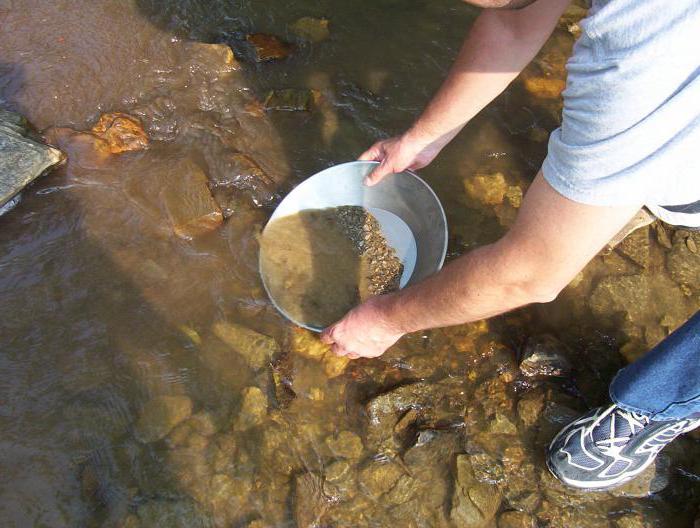
The latter is especially developed in former sites of industrial mining, which are not currently exploited. There is also no diamond mining, although diamond pipes are present in small quantities in the region.
Geographic location and landscape features
It is customary to look for gold in places of massive occurrence of igneous rocks. In geography, this term is called crystalline shields. Part of the crystalline Baltic shield is located on the territory of the Leningrad region. Most of the formation is occupied by the Karelian Isthmus.
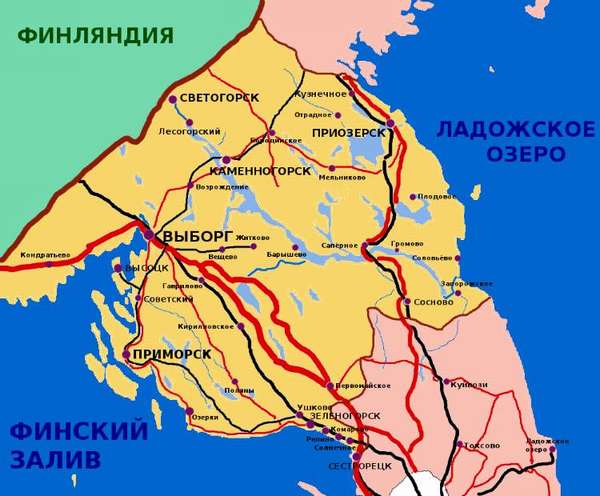
The origin of the isthmus coincides with the active phase of the Ice Age. At this time, blocks of ice moved and mixed rocks on the surface of the earth's crust. This contributed to the massive deposition of heavy metal on the surface.


